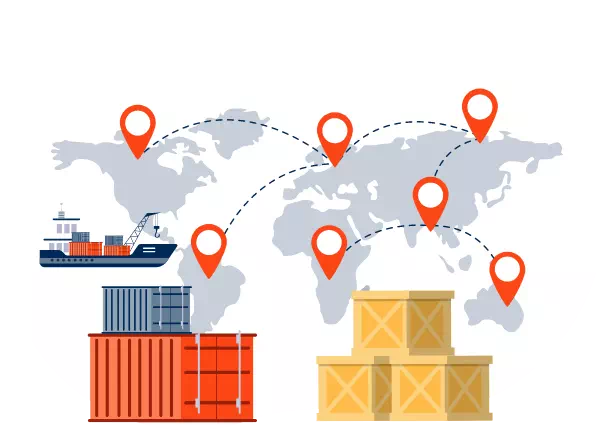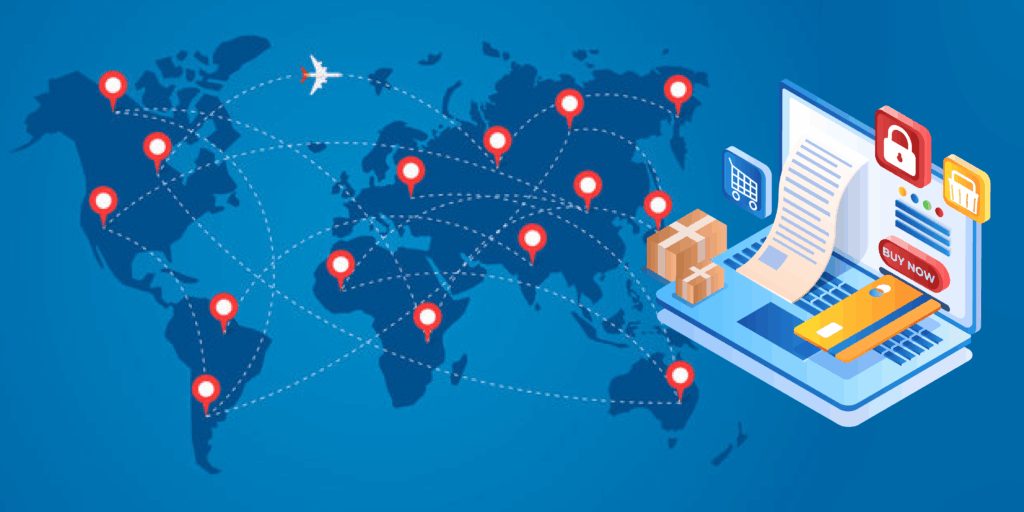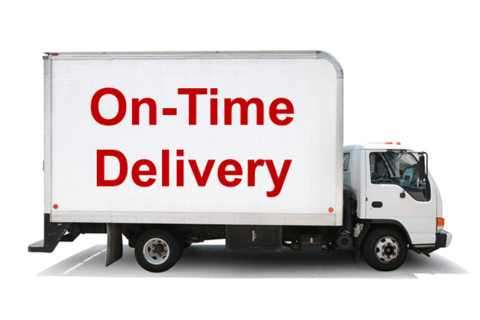Best Practices for E-commerce Brands Using Global Logistics Track Tools
Global Logistics Track Tools are now the backbone of reliable delivery for e-commerce brands. They turn raw scan events into clear progress, accurate ETAs, and proactive messages customers trust. Competition is tight, margins are thin, and expectations keep rising. With the right setup, these tools cut costs, prevent support tickets, and improve the post-purchase experience from cart to doorstep.

Set clear goals before you integrate
Define outcomes, not just dashboards
Decide what success looks like. Strong starting goals include fewer “Where Is My Order” tickets, a higher first-attempt delivery rate, a lower exception rate, and shorter transit time variance. Tie each goal to a specific workflow inside your Global Logistics Track Tools so every chart drives an action.
Choose the right scope
You do not need every feature on day one. Start with core tracking, branded status pages, and alerts. After your team is comfortable with the basics, add predictive ETAs, returns, and cross-border modules.
Build a clean data foundation
Normalize carrier events
Carriers use different scan names and timestamps. Standardize them into a single schema (e.g., “picked_up,” “in_transit,” “out_for_delivery,” “delivered”). Consistent event naming makes filters, alerts, and reports much easier.
Validate addresses and product data upfront
Bad addresses and missing HS codes create delays. Add address validation at checkout and store accurate product attributes, dimensions, and dangerous goods flags. Your Global Logistics Track Tools will perform far better with clean inputs.
Design integrations that are API-first

Stream events to your stack
Connect the tools to your OMS, WMS, CRM, and help desk through webhooks or streaming APIs. Agents should see live status, ETA changes, and exception notes without switching tabs.
Plan for peak traffic
Holiday traffic will stress every integration. Use idempotency keys, retry logic, and clear rate limits. Log failures with enough detail to replay events quickly.
Use Predictive ETAs to move from status to action
Replace static dates with probability-based windows
Predictive ETAs should factor in route history, holidays, weather, and hub congestion. Display a delivery window and a confidence score. When confidence drops, escalate early and offer options.
Close the loop with playbooks
An ETA is only helpful if it changes your behavior. Create playbooks for “ETA risk high,” “no scan 48h,” and “cross-border hold.” Automate outreach, carrier nudges, or rerouting when thresholds are met.
Craft a branded post-purchase experience
Build a tracking page that customers want to visit
Make your page fast, mobile-friendly, and clear. Show status, next milestone, and Predictive ETAs. Add delivery preferences, “notify me” options, and simple FAQs. Promote relevant accessories, but never bury the status.
Proactive notifications that reduce WISMO
Send alerts for label created, picked up, out for delivery, and exceptions. Keep messages short and informative. Link to your tracking page for details. The aim is to answer questions before customers ask.
Manage exceptions like a control tower

Score shipments for risk
Not every delay is equal. Use rules that score each parcel by last scan time, distance to SLA, and route history. High-risk orders go to the front of the queue.
Give agents context, not just codes
Inside your Global Logistics Track Tools, surface carrier contact options, last three events, promised SLA, and customer notes. With the right context, agents resolve issues in one touch instead of three.
Streamline returns and exchanges
Make returns feel forward, not backward
Offer drop-off, locker, or pickup choices based on location. Generate labels automatically and track inbound parcels like outbound ones. If your risk rules allow it, trigger a refund or exchange when the first inbound scan appears.
Use return data to reduce future returns
Analyze reasons by SKU, size, and region. Feed insights back to product pages, size guides, and packaging. A small copy change can remove a large return driver.
Tame cross-border complexity

Prepare customs data early
Attach HS codes, descriptions, and values at fulfillment time. Your Global Logistics Track Tools should flag missing or risky data before the parcel leaves the origin hub.
Match local delivery preferences
Some countries prefer lockers; others rely on door delivery. Adapt notifications and delivery options by country, and reflect local holidays in Predictive ETAs.
Add IoT signals for sensitive shipments
Sensors that prevent disputes
For perishables, pharma, and fragile goods, temperature, shock, and tilt sensors add accountability. When a breach occurs, notify the receiver and auto-create a replacement. Claims become faster and fairer with evidence.
Measure what matters and publish a scorecard

Track a focused KPI set
- On-time delivery rate (OTD)
- First-attempt delivery rate
- Transit time variance
- Exception rate and time-to-resolution
- WISMO tickets per 100 orders
- Predictive ETA accuracy and confidence
- Cost per shipment (all-in)
- CO₂e per parcel
Share results weekly
Send a simple scorecard to operations, support, and merchandising. Celebrate wins and flag problems by lane, carrier, and region. Trends beat snapshots.
Train people and update processes
Make the tools part of daily rituals
Run a daily stand-up around the exception queue and high-risk ETAs. Review yesterday’s misses and today’s plan. Short meetings keep actions tight.
Document playbooks and keep them current
Write concise steps for each common issue. Include sample messages, carrier notes, and escalation paths. Update playbooks when rules, carriers, or products change.
Build an adoption roadmap you can deliver

Phase 1 (Month 1–2): Foundation
Centralize tracking, launch your branded page, and turn on core alerts. Connect the help desk so agents see live status.
Phase 2 (Month 3–4): Proactive care
Enable Predictive ETAs, risk scoring, and exception playbooks. Set targets for WISMO reduction and time-to-resolution.
Phase 3 (Month 5–6): Optimize cost and speed
Compare carriers by SLA and variance. Shift volume to top performers. Add locker delivery where failed attempts are high.
Phase 4 (Month 7–9): Cross-border and returns
Automate customs data checks and landed cost. Roll out returns orchestration with drop-off and locker partners.
Phase 5 (Month 10–12): Differentiate
Bring in IoT for sensitive SKUs, add sustainability reporting, and feed clean data to your warehouse and BI tools for deeper analysis.
Strengthen security and compliance

Protect customer data end-to-end
Encrypt at rest and in transit. Limit access by role. Redact personal data in support tools when not required. Respect regional data residency rules and keep audit logs.
Test third-party risk
Vet carriers and integration partners. Confirm how they handle breaches and incident response. Your reputation depends on the entire chain.
Avoid common pitfalls
“All dashboards, no decisions”
Nice charts do not move parcels. Tie every report to a rule or playbook. If a graph never triggers an action, remove it.
Over-customizing too soon
Heavy customization slows upgrades and adds bugs. Use native features first, and customize only when a clear business gain exists.
Ignoring the last mile
Many delays happen after “out for delivery.” Add options like safe places and pickup points. Last-mile flexibility lifts first-attempt success.
Letting data quality drift
Carriers change event formats. Schedule monthly schema checks and alert on mapping failures. Broken mappings cause silent blind spots.
Practical checklists you can use today

Go-live readiness
- Carrier events mapped to a single schema
- Branded page loads in under two seconds on mobile
- Alerts configured for pickup, out for delivery, exception, delivered
- Predictive ETAs visible to customers and agents
- Help desk shows live status and last three events
- Exception queue with priority rules enabled
Weekly operations
- Review high-risk shipments and overdue ETAs
- Sample 20 exceptions for root causes
- Update playbooks for any new carrier behavior
- Compare carriers on OTD and variance; shift 5–10% if needed
Quarterly strategy
- Add or remove carriers based on performance
- Expand lockers in regions with failed attempts
- Pilot new features (returns portals, IoT tags, greener lanes)
- Refresh training and scorecards for new teammates
Conclusion
Global Logistics Track Tools help e-commerce brands turn uncertainty into a steady, predictable service. Set goals first, keep data clean, and design integrations that surface the right context at the right time. Use Predictive ETAs to act early, not just explain delays. Stay close to customers with clear pages and proactive alerts. Then keep improving with tight playbooks, focused metrics, and a roadmap your team can deliver. When the tools, data, and people move together, delivery stops being a cost center and becomes a growth engine.
Industry Insights
news via inbox
Nulla turp dis cursus. Integer liberos euismod pretium faucibua








